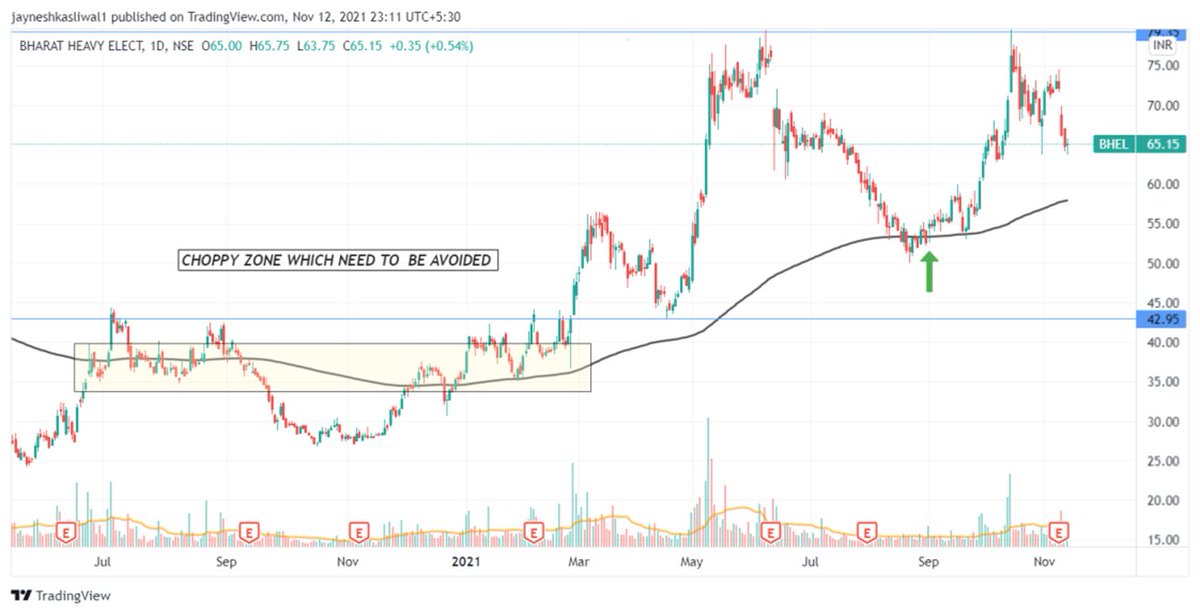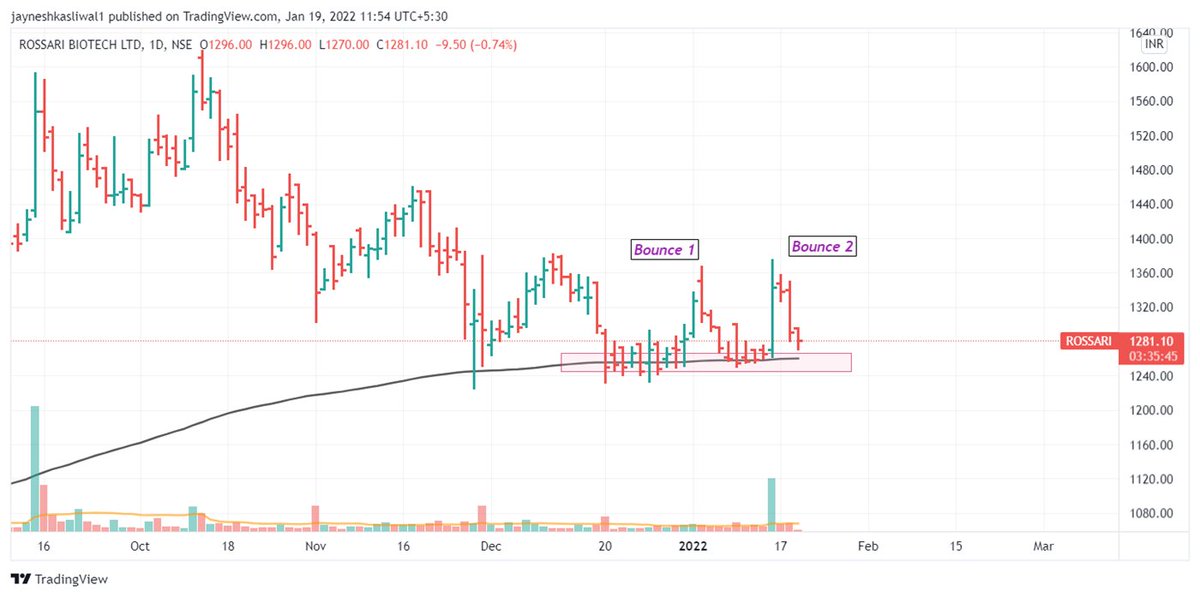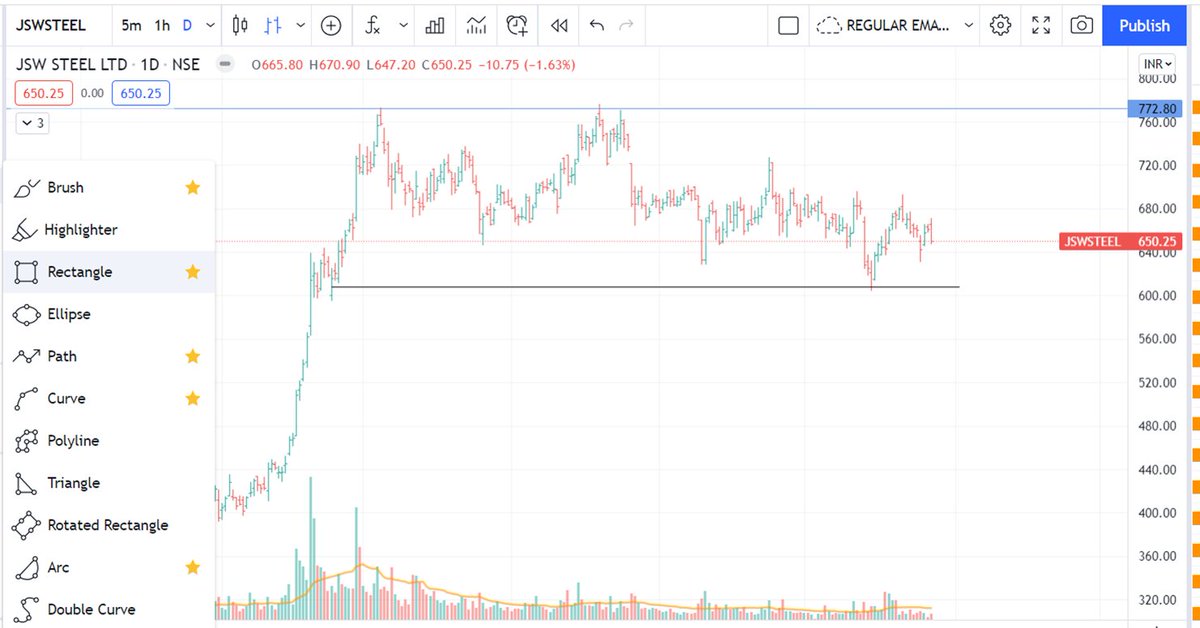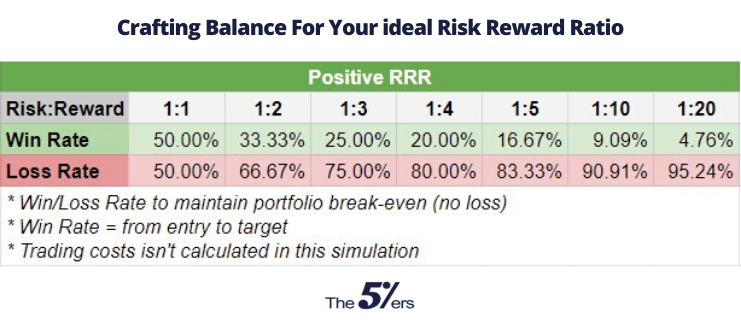
200 EMA Reversal Strategy for Positional Trading
A Short Thread 🔖
✅Covering Price Action
✅How to identify the trend
Retweet And Share !
A Short Thread 🔖
✅Covering Price Action
✅How to identify the trend
Retweet And Share !
200 EMA : THE LONG TERM TREND
1.When a stock price crosses its 200-day moving average, it is a technical signal that a reversal has occurred.
2. A stock above 200 ema is considered bullish in its long term trend and if its below 200 ema its considered bearish
1/n
1.When a stock price crosses its 200-day moving average, it is a technical signal that a reversal has occurred.
2. A stock above 200 ema is considered bullish in its long term trend and if its below 200 ema its considered bearish
1/n
3. A simple rule of not buying stocks below 200 ema for short term trading could save a lot of money
4. One may consider investing in stocks if the stock is below 200 ema only if he is confirmed about the fundamentals of the stock
5. Some may not agree with this and its ok!
2/n
4. One may consider investing in stocks if the stock is below 200 ema only if he is confirmed about the fundamentals of the stock
5. Some may not agree with this and its ok!
2/n
TREND:
200 ema trending up : Uptrend
200 ema sideways : Consolidation
200 ema trending down : downtrend
3/n
200 ema trending up : Uptrend
200 ema sideways : Consolidation
200 ema trending down : downtrend
3/n
How to apply Moving Averages in Tradingview ?
Select: moving average exponential
Change the period to 200 in setting
4/n

Select: moving average exponential
Change the period to 200 in setting
4/n


Pic 1: Close above 200 ema after a general market correction
Pic 2: 200 ema as Dynamic support
Pic 3: Sideways zone to be cautious
6/n


Pic 2: 200 ema as Dynamic support
Pic 3: Sideways zone to be cautious
6/n



Strategy :
Look for Reversal on stocks near 200 ema after a general market pullback
Look for double bottom structure on 200 ema for confirmation
Single pullback on 200 ema is sold of generally and shouldnt be traded .
7/n
Look for Reversal on stocks near 200 ema after a general market pullback
Look for double bottom structure on 200 ema for confirmation
Single pullback on 200 ema is sold of generally and shouldnt be traded .
7/n
If a stock is consolidating near 200 ema wait for small trend change before initiating a long trade
If stocks have good fundamentals then reversal have high chances as 200 ema is value zone for investors
After a stock has fallen areound 30 % from highs it becomes value buy
8/n
If stocks have good fundamentals then reversal have high chances as 200 ema is value zone for investors
After a stock has fallen areound 30 % from highs it becomes value buy
8/n

Pic 1: Praj ind
Double bottom on W pattern formation on 200 ema
Pic 2: Balaji Amines
Pic 3: Rossari Biotech
Long trade with stoploss below 200 ema can be initiated risk should be max 5 to 7% per trade
9/n


Double bottom on W pattern formation on 200 ema
Pic 2: Balaji Amines
Pic 3: Rossari Biotech
Long trade with stoploss below 200 ema can be initiated risk should be max 5 to 7% per trade
9/n



Enter on double bottom structure breakout
Stoploss in this case should be max 5 to 7% as holding stocks below 200 ema is not advised
Keep Pyramiding if stocks move higher and adding positions
chartink.com/screener/funda…
Stoploss in this case should be max 5 to 7% as holding stocks below 200 ema is not advised
Keep Pyramiding if stocks move higher and adding positions
chartink.com/screener/funda…

Link to YouTube Video Explaining this strategy
• • •
Missing some Tweet in this thread? You can try to
force a refresh










